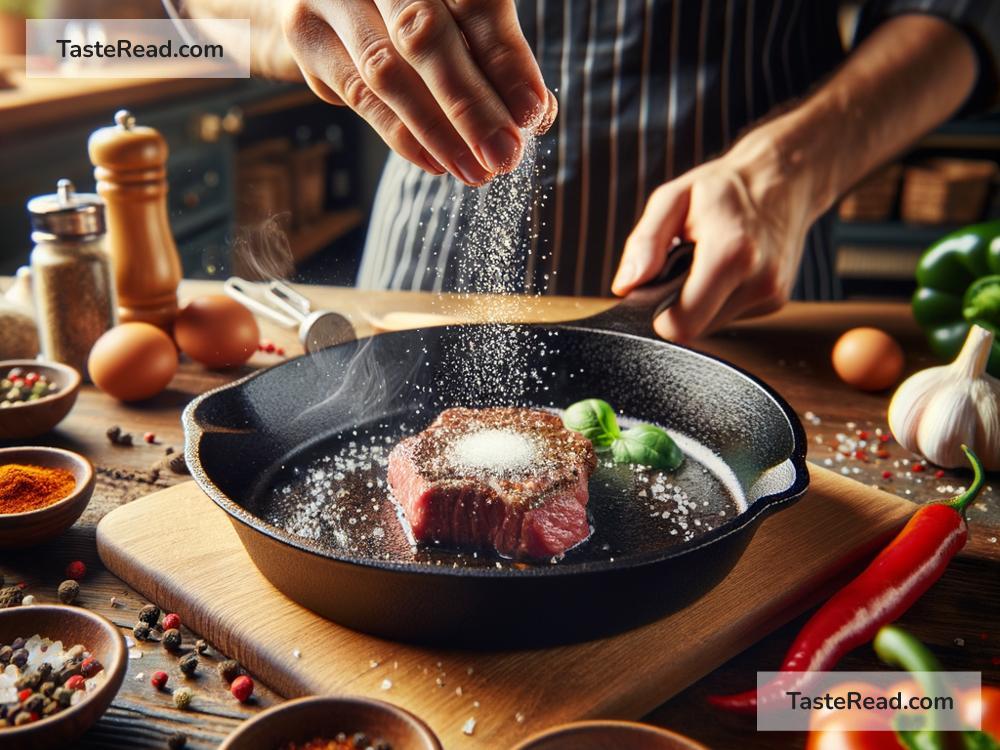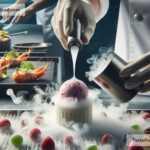The Science of Cooking with Chemical Tenacity: Techniques and Tips
Cooking is more than just mixing ingredients and heating them up; it’s a magical process powered by science. Every stir, sizzle, and simmer happens because of chemical reactions. Understanding the science of cooking can make you a better chef, allowing you to turn simple ingredients into delicious meals with precision and creativity. Let’s dive into the basics of how chemistry plays a role in cooking, along with techniques and tips to elevate your kitchen game.
What Is Chemical Tenacity in Cooking?
Chemical tenacity refers to the strength and reliability of the chemical processes that happen during cooking. When you bake bread, fry an egg, or simmer a stew, chemical reactions occur that transform the ingredients. These reactions give your food its flavor, texture, and aroma. The better you understand these reactions, the more control you have over your cooking.
The Role of Chemistry in Everyday Cooking
Maillard Reaction: The Secret to Flavor
One of the most well-known chemical reactions in cooking is the Maillard reaction. This happens when heat causes sugars and proteins in food to interact and create brown, flavorful compounds. It’s the reason why a grilled steak, roasted coffee, or golden-brown bread tastes so good.
- Techniques and Tips: To maximize the Maillard reaction, cook food at high temperatures or use dry heat methods like grilling, roasting, or frying. Ensure your food is dry before cooking (pat it with a paper towel) to prevent steaming instead of browning.
Caramelization: Sweet Science
Caramelization occurs when sugars in food are heated and break down into new molecules, creating sweet, nutty, and complex flavors. Think of how onions turn sweet during cooking or how sugar transforms into caramel syrup.
- Techniques and Tips: Substitute white sugar with natural sugars like honey or maple syrup for richer flavors. Cook foods slowly over medium heat (e.g., for caramelized onions) to avoid burning the sugars.
Protein Denaturation: Transforming Texture
Proteins in meat, eggs, and dairy change structure when exposed to heat, acid, or salt—a process called protein denaturation. This makes meat tender, eggs firm, and cheese stretchy.
- Techniques and Tips: When cooking eggs, use gentle heat to create soft, fluffy textures (e.g., for scrambled eggs). For tender meat, marinate it in acidic mixtures like lemon juice or yogurt before cooking to break down tough proteins.
Emulsification: Mixing Oil and Water
Oil and water don’t usually mix, but emulsification helps you create creamy sauces and dressings, such as mayonnaise or vinaigrettes. This process uses emulsifiers (like egg yolks or mustard) to hold oil and water together.
- Techniques and Tips: Whisk your ingredients vigorously to ensure they blend well. Add your oil slowly while stirring to prevent separation.
Chemical Techniques for Better Cooking
Understand Heat Transfer
Heat doesn’t just cook food—it changes its chemical structure. Knowing how heat behaves (e.g., conduction, convection, and radiation) can help you control cooking outcomes.
- Techniques and Tips:
- Use low, steady heat for slow cooking, such as braising or baking—it melts fats and enhances flavors.
- Use high heat for rapid cooking, which seals the exterior of food (such as searing meat).
Use Salt Wisely
Salt isn’t just for flavor; it’s a chemical powerhouse. Salt can draw moisture out of food, enhance flavors, and even change the texture of food (like softening beans or vegetables).
- Techniques and Tips: Season your food in layers as you cook rather than adding salt only at the end. For meats, use a salt rub well before cooking to increase tenderness and flavor.
Experiment with Acids
Acidic ingredients like vinegar, lemon juice, or yogurt are full of cooking chemistry. They tenderize proteins, balance flavors, and keep vegetables bright and crisp.
- Techniques and Tips: Add a splash of acid at the end of cooking soups or stews to brighten the flavor. When steaming vegetables, add a few drops of vinegar or lemon juice to retain their vibrant color.
The Power of Precision and Temperature Control
Cooking is all about precision. Small changes in temperature or time can affect chemical reactions and determine whether your dish turns out perfectly or fails. Use tools like meat thermometers, timers, or digital scales to stop guessing and start cooking with confidence.
- Techniques and Tips:
- Use a thermometer for accurate doneness (e.g., for roast chicken or steak).
- Weigh your ingredients for baking, where chemical accuracy is crucial.
Cooking as an Experiment: Learn and Grow
Every meal you make is an experiment, and with each attempt, you learn more about how food reacts to heat, cold, time, and seasoning. Don’t be afraid to try new techniques or mix unusual ingredients. Embrace mistakes—they’re part of the process of mastering chemical tenacity in cooking.
Final Thoughts
Cooking is equal parts art and science. When you understand the chemical reactions that happen during cooking, you can make smarter choices, create tastier dishes, and troubleshoot problems. Apply these techniques and tips in your kitchen, and enjoy exploring the world of culinary chemistry. Who knows? You might even start viewing yourself not just as a cook but a scientist of flavor!
Happy cooking!


